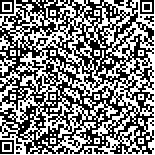| 摘要: |
| 光的非视觉效应对人的生理和心理健
康产生重要影响。在健康导向下,探讨如何通过
教室光环境保障青少年身心健康具有重要的社
会意义。研究调研评估苏州中小学校典型教室
光环境的非视觉现状,并实地改造教室的光照
环境,量化研究标准光照环境、高光环境对学
生日间警觉度、夜间睡眠质量的影响。结果显
示,与标准光照环境相比,晨间或晚间高光环
境显著改善了光照干预时段的急性警觉度;晨
间高光相较于晚间高光,显著延长了学生的深睡
时长,且更加容易入睡。研究为我国教室健康
光环境的优化提供了数据支撑和设计参考。 |
| 关键词: 教室光环境 健康 非视觉 警觉度 睡眠 |
| DOI:10.13791/j.cnki.hsfwest.20230214 |
| 分类号: |
| 基金项目:国家重点研发计划项目(2021YFE0200100);国
家自然科学基金青年项目(51808364);国家留
学基金项目(202106920031);苏州大学课程思
政示范项目(5813830122) |
|
| Status Evaluation and Experimental Study of Luminous Environment in Classrooms: TheNew Trend Towards Non-Visual Effect and Health |
|
XU Junli,LI Limei,LIU Mingzhizi
|
| Abstract: |
| The educational environment in China is under great pressure, and academic work is
stressful. Students spend most of their day in the classroom. Development in China (2019–2020)
reported that adolescents have increasingly serious sleep problems, accompanied by daytime
sleepiness and lack of vitality. Previous studies have shown that the non-visual effects of light have
an essential impact on human physiological and psychological health. In the context of health-
oriented, it is socially significant to explore how to safeguard adolescents’ physical and mental health
through classroom luminous environments.
The study selected typical classrooms in primary and secondary schools in the Suzhou area
to investigate and assess the characteristics of daylight, classroom lighting, and users’ subjective
perceptions. The survey found that the daylight intensity varies greatly, and the distribution is
uneven. The uniformity of illuminance in most classrooms is lower than the Chinese standard.
Meanwhile, the demands of the projected teaching model can result in even lower daylight utilization.
In addition, students are exposed to high illuminance levels and high color temperature for long
periods in the evening, which may have a negative impact on non-visual indicators. Students do not
receive enough natural light during the day, and the problem is compounded by high illuminance
levels and high color temperature of electric lighting in the evening. How to effectively optimize the
classroom luminous environment to support healthy physiological rhythms of adolescents is one of
the pressing issues for research on healthy luminous environments in classrooms.
Based on the current research, the classroom luminous environment was modified to quantify
the effects of standard lighting and high light level exposure on students’ daytime alertness
and nighttime sleep quality. The experiments were conducted in winter when the weather was
predominantly cloudy (about 80%), and natural light was relatively constant. Seventy-nine subjects
were recruited to participate in this study. The experiment was divided into three phases: baseline,
washout, and intervention, which lasted for seven weeks. During the baseline period, both classes
were exposed to standard lighting conditions (300 lx, 4 000 K), while during the intervention period,
Class 2 in the morning (6:30~9:30) and Class 1 in the evening (18:30~21:30) were exposed to high
lighting conditions (500 lx, 6 000 K). The illuminance data was recorded in real-time every ten
minutes by the illuminometers. Karolinska Sleepiness Scale (KSS) questionnaire was used to assess
students’ alertness and sleepiness during the daytime. Sleep wristbands (HUAWEI Band 3 Pro,
China), Pittsburgh Sleep Quality Index (PSQI) questionnaire and sleep diary were used to assess
the effects of different luminous environments on night sleep. The results showed that morning or
evening high light levels significantly improved students’ acute alertness during the increased light
level hours compared with standard lighting. Compared with evening high light levels, morning high
light levels significantly longer students’ deep sleep duration, easily falling asleep. An interesting
finding was that high light exposure in the evening significantly increased alertness during theincreased light level hours compared to standard lighting. Although there was no significant effect on students’ sleep quality, there was a trend toward a
negative impact. This suggests that high illuminance and high color temperature should be used cautiously for classroom lighting in the evening. When
students study at night, it is desirable to create a healthy light environment that promotes alertness without negatively impacting sleep.
Future research needs to fully consider the learning mode needs of students during the daytime and evening hours, set up an intelligent and personalized
dynamic lighting system, and explore a healthy classroom lighting environment that can effectively support students’ non-visual effects. This study provides
data support and design reference for optimizing healthy luminous environments in China’s classrooms. |
| Key words: Classroom Luminous Environment Health Non-Visual Effect Alertness Sleep |


